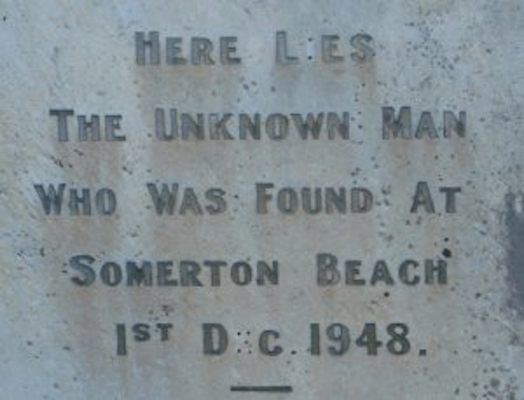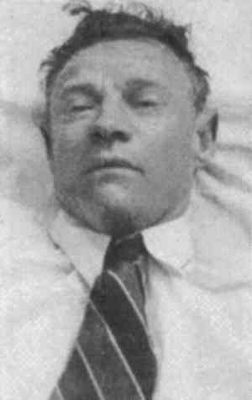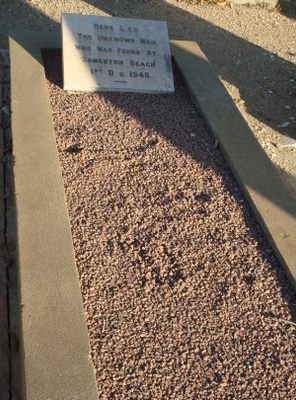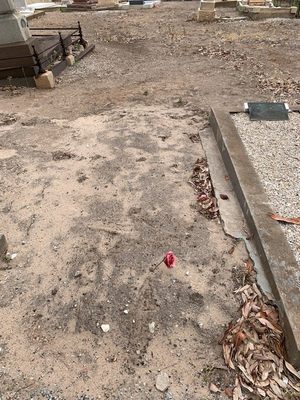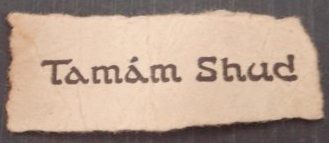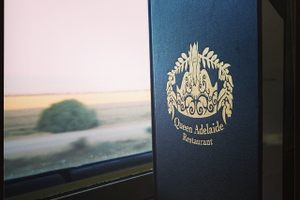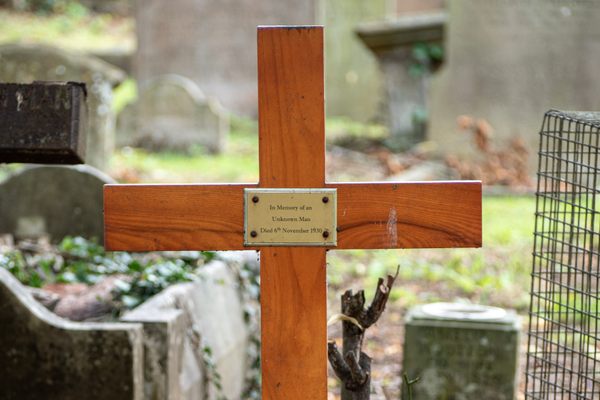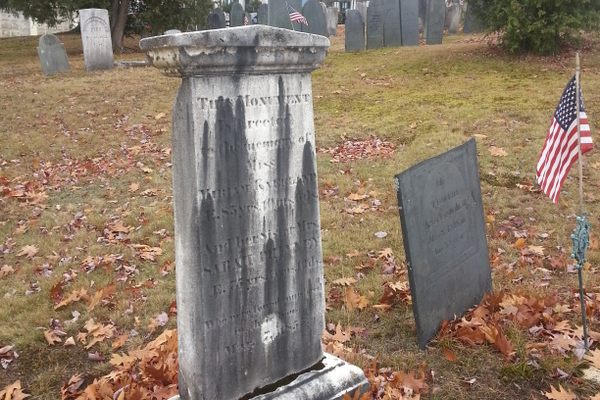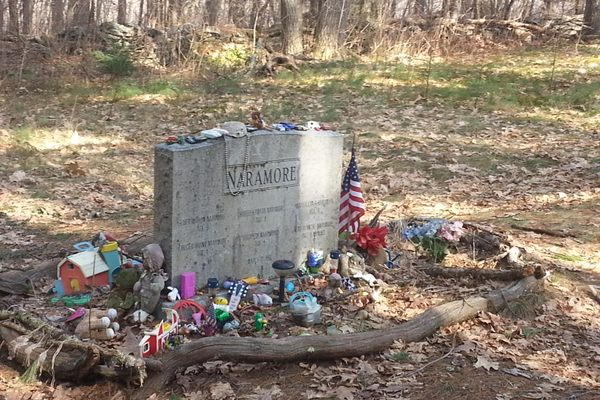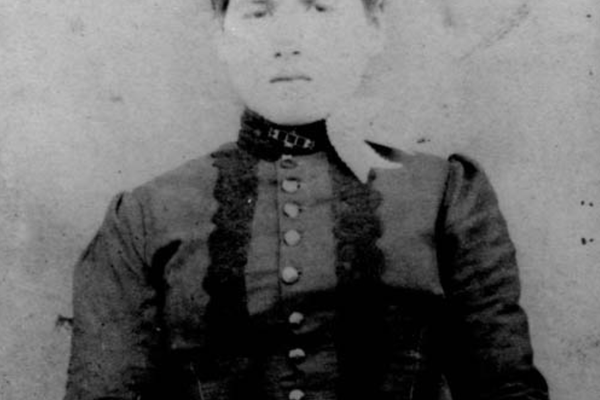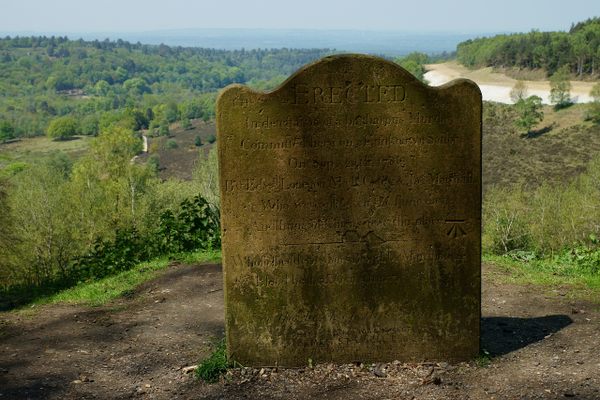About
On the morning of December 1st, 1948, the body of an unidentified man was found lounging against a seawall on an Adelaide beach dead from unknown causes. As investigators delved deeper into the corpse's demise they came up with more questions than answers, leaving a cold case involving poetry and Cold War codes that remains unsolved to this day.
After the body was discovered, authorities began searching the man for any clue to his identity, but found that he was completely devoid of identification. The only items they found on the body were a pack of gum, some cigarettes, a ticket to the beach and some combs. It even appeared that the tags had been removed from his clothing. The only unusual feature about the body was a torn inner pocket that had been repaired using a distinctive orange thread. His dental records matched none in Australia. The man was essentially a ghost.
The autopsy revealed that there was excess blood in a number of his organs, which, with no other evident cause of death, led researchers to speculate that the mystery man had been poisoned. While no traces of a toxic agent were found in the man's system, the crime techs theorized that it could have been a quick-dissolving agent such as digitalis. It was also noted that the man's calves and feet were uniquely muscular and pointed like those of a ballet dancer.
Soon a number of people came forward to report seeing the man lying on the beach the night before. One woman even said she saw him raise his arm slightly. Each witness just assumed the man was drunk. With no more to go on, the case seemed to have simply stalled out.
With few avenues of discovery left, the authorities performed a wide sweep of baggage holding sites in the area to see if anything had been abandoned, and sure enough they discovered a brown briefcase, checked in just days before the man's body was found. It was then linked to the body by a spool of the same distinctive orange thread that had fixed his pocket. In addition to the thread, the briefcase contained some items of clothing and a few strangely sharpened tools. The name "T. Keane" was found on a number of the clothing items, but detectives soon ruled out that as the name of their John Doe.
Despite being initially promising, the briefcase proved to be nothing but a further source of dead ends. Fast forward to June of 1949 and the baffling body is reexamined by investigators. Upon reexamination, the case's most haunting clue came in the form of a tightly rolled tear out from a book that had been hidden in his small pocket watch pocket. The small piece of paper simply featured the words "Tamam Shud," translating roughly from the Persian as "It is Ended." This phrase is also the final line in The Rubaiyat of Omar Khayyam, a book of poetry revolving around life and death that was popular among the soldiers of the time, but a rare text in Australia.
Police put out a notice for anyone holding a copy of the book and soon a man came forward saying that he had found a copy of the book sitting in the backseat of his car weeks before the man was found. Analysis found that the small piece of paper had come from that specific book, which contained yet another baffling clue. Police found faint impressions in the pages of the book which, when brought to the surface, seemed to be some sort of code, as well as an unlisted phone number.
Code experts were called in to decipher the enigma, but all claimed that its was unsolvable due to its short length. The phone number however led to a nurse who, while denying knowing the man seemed almost lost for words when presented with the details of his death. She also claimed to have once owned a copy of The Rubaiyat but could not confirm if the one found was hers. Investigators seemed sure that there was a link between the two, possibly involving an affair hence the nurse's reluctance to acknowledge knowing the man, but with nothing more concrete to go on, the case went cold.
To this day the case has yet to be solved, although two popular theories exist. The first is that the Tamam Shud Man was a Cold War spy on the run who was poisoned in some sort of intrigue. Amateur code-breakers continue to work on the five mysterious strings of code, but none have yet been able to crack it. The other prevailing theory is that the Unknown Man, overcome with sorrow over the nurse, poisoned himself on that beach leaving behind nothing but a piece of The Rubaiyat as his final words.
We may never know the real truth behind the Tamam Shud Man's death, but armchair investigators wishing to commune with the body for inspiration can find him buried in Adelaide's West Terrace Cemetery with a stone identifying him simply as, "The Unknown Man."
Update March 2022: The Unknown Man has been temporarily removed from his resting place for DNA testing, including his headstone.
Update February 2023: The Somerton Man has been identified as Carl Webb.
Related Tags
Community Contributors
Added By
Published
September 29, 2013
Updated
March 24, 2022
Sources
- https://www.thetravellingtom.com/things-to-do-in-adelaide
- http://en.wikipedia.org/wiki/Taman_Shud_Case
- http://www.smithsonianmag.com/history/the-body-on-somerton-beach-50795611/?no-ist
- http://brokenmeadows.hubpages.com/hub/The-Mystery-of-the-Somerton-Man-Taman-Shud-Case
- https://www.abc.net.au/news/2021-05-19/exhumation-of-somerton-man-remains-at-west-terrace-cemetery/100147576
